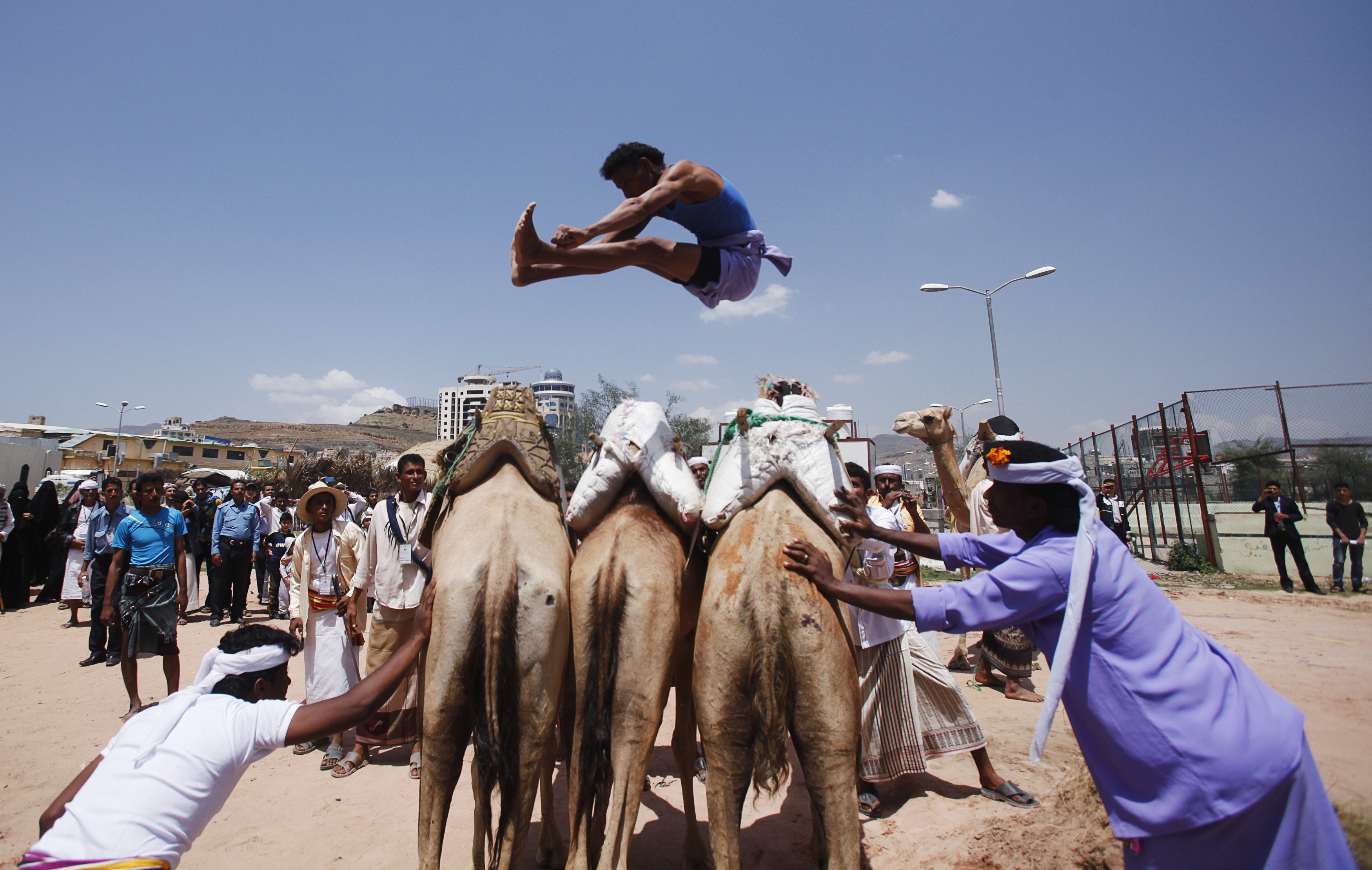Camel Jumping
The barefoot leapers of Yemen

Sassan Tabatabai
The world record for the long jump, at 8.95 meters (29ft, 4&1/4in), belongs to Mike Powell of the United States. The record for the high jump, at 2.45 meters (8ft, 1/2in), belongs to Javier Sotomayor of Cuba. The record for barefoot camel jumping, at 6 camels, belongs to Zaid Omer of Yemen. Unlike high-profile track and field events like the long jump and high jump, which are perennial highlights of the Olympic Games, the slightly less-illustrious sport of camel jumping is only practiced among the Zaraniq tribe of Western Yemen who inhabit the Red Sea coast of the country.
It must be clarified that camel jumping is not similar to an equestrian event where the camel is doing the jumping. Here, the camel is the hurdle over which the participants must jump. The camelidae under consideration are the dromedary, also known as “Arabian Camels.” Distinguished by their single hump and long, curved neck, they are the tallest of their species, and adult males can easily reach a height of over 2 meters (6-7ft) at the shoulders, making them formidable obstacles to surmount.
The rules of the sport are fairly straight forward. Jumpers compete barefoot, wearing traditional clothing tucked in at the waist. They sprint full speed at a camel that is being held in place by its reigns and tail, and launch off a raised mound of packed mud and dried weeds that stands approximately one foot high. A successful attempt is when the jumper clears the camel without touching any part of it. With each successful jump, another camel is added to the dromedary line-up. The participant who jumps over the most number of camels is declared the winner. Typically, the best camel jumpers, like Zaid Omer, can clear five or six camels.
The sport is not without its dangers, both to the contestant and the obstacle. A leap gone awry can have the athlete crash into the camel’s flank or land on its long neck, much to the detriment of both man and beast. An ill-timed launch and awkward landing can easily result in a broken leg.
The victorious dromedary leaper receives a modest cash prize but the real bounty is the prestige of being considered the best camel jumper among the Zaraniq, who pride themselves on their physical prowess. They are even famed for not using weapons in battle, instead relying on their natural strength and stamina to overcome their adversaries.
This odd sport is rumored to have originated in a dispute between two Zaraniq tribesman who were haggling over the price of a camel. Competitions are usually held during special occasions like weddings, the celebration of the Prophet Mohammad’s birth, or the annual palm festival. (Dates constitute a major crop in Yemen where an approximate 20 thousand dates are harvested annually from almost 3.5 million date-bearing palm trees.)
The sport of camel jumping has a dedicated following and is still practiced in war-torn Yemen. It is slowly gaining popularity outside the country but chances are, it will not be declared an Olympic event anytime soon.


